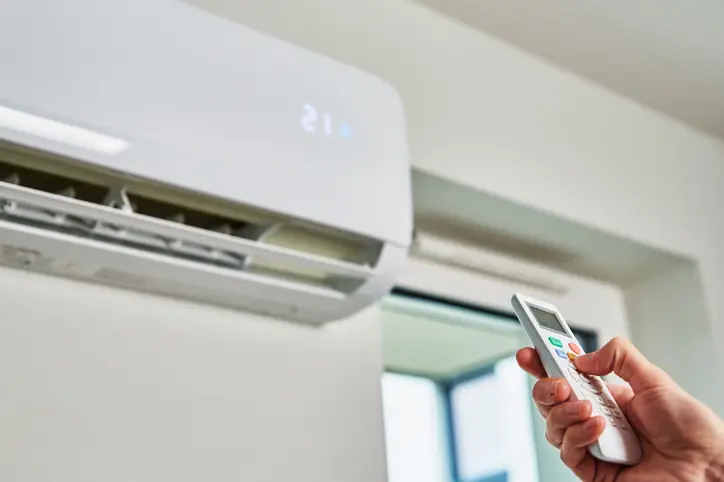Air conditioning could be the next frontier in managing electricity demand, if the country can get the right tech, the right policies, and the right incentives in place to encourage Australians to buy smart systems.
More and more Australians are turning to reverse cycle air conditioners (RCACs), a heat pump that can cool and heat for cents rather than the dollars that gas costs.
But few devices are sold yet with smart technology that could allow them to be managed by electricity companies for demand response, says Dr Gabrielle Kuiper in a new report from IEEFA.
And while air conditioners need to meet minimum efficiency standards, they don’t need to meet any “minimum smarts”, she says.
“Ensuring that RCACs can be used as flexible demand will be an important way to help lower costs for consumers, improve the operation of the electricity grid, and reduce emissions,” she says.
“Two of the largest energy retailers in Australia are already offering opportunities for households with smart meters to earn rewards for voluntarily flexing their electricity use at times of peak demand.
“Our research shows a strong public appetite for these schemes. They not only reduce household energy costs. Demand flexibility can also help to minimise whole-of-system costs, which will become increasingly important as Australia transitions to greater levels of variable renewable energy generation.”
Kuiper recommends governments subsidise low-cost add-on sensors to make RCACs smart, as cheap Wi-Fi controllers allow households to have their energy use managed but override that as needed.
“Not only do efficiency standards need to be raised and appliances required to be smart, but these standards also need to be put in place as soon as possible – because the time of day of electricity use becomes increasingly important with growing variable renewable energy supply,” Kuiper says in the report.
“The technology required to make a new or existing RCAC smart is cheap. And the development of platforms to reward demand flexibility is inexpensive compared to the costs of building new electricity generation and network infrastructure.”
Winning the people over
Incentives for consumers to trust energy retailers with their heating and cooling will come at a cost, given the already-high levels of scepticism that Australians already have for these companies.
Kuiper’s report says Amber Electric, Origin and AGL have RCAC demand response programs that allow the retailers to switch the systems on and off in moments of need, and which are well supported by their customers.
But only households with smart meters can participate in these offers, or about less than 20 per cent of households, excluding Victoria, in the National Energy Market (NEM).
And there are not yet different prices available for flexing demand for different loads, as an Australian Energy Market Commission (AEMC) draft rule change is still in the works.
Another issue will be ensuring that homes are built to cope with turning off the heating in winter, and cooling in summer.
“Climateworks research has shown, when paired with full electrification, ‘climate-ready’ upgrades could deliver a large increase in bill savings, from $1,000/year in the Northern Territory, through to more than $4,500/year in the Australian Capital Territory,” the report says.
“Climateworks defines ‘climate-ready’ upgrades as ceiling, floor and wall insulation, high levels of draught sealing, double-glazed windows, heavy drapes and roller shutters, combined with an efficient electric RCAC and a heat recovery ventilation system.
“Australian governments should look at what types of thermal efficiency upgrades make economic sense once overall benefits to health and the energy system are taken into account.”
Be more like Europe
A coalition of large tech companies, including Apple, Google, Amazon and Samsung, are developing a global open source interoperability smart home standard called Matter for household appliances including RCACs, but in the northern hemisphere jurisdictions are moving to regulate as well.
In the US, the Energy Star program has a voluntary criteria for connected products that includes open standards for two-way communication.
California has introduced its first flexible demand appliance standard, the UK has a voluntary standard, and the European Commission has proposed a voluntary Code of Conduct that includes a commitment to open communication protocol.
These moves mean there are an increasing number of smart devices available in Australia.
But these are being hamstrung by the likes of South Australia, which has imposed a requirement that appliances comply with an outdated standard, the report says.
IEEFA wants the state – and other governments in Australia – to bring in a more sophisticated requirement that air conditioners sold in Australia are ‘smart’.
“The direction of travel internationally is clear: towards smart AC,” says Kuiper.
“Therefore it is critical to have the right standards in place as soon as possible. The public appetite to reduce bills through flexible demand exists. It is up to Australian governments to make it easier for consumers by normalising the sale of smart, efficient heating and cooling technology.”








